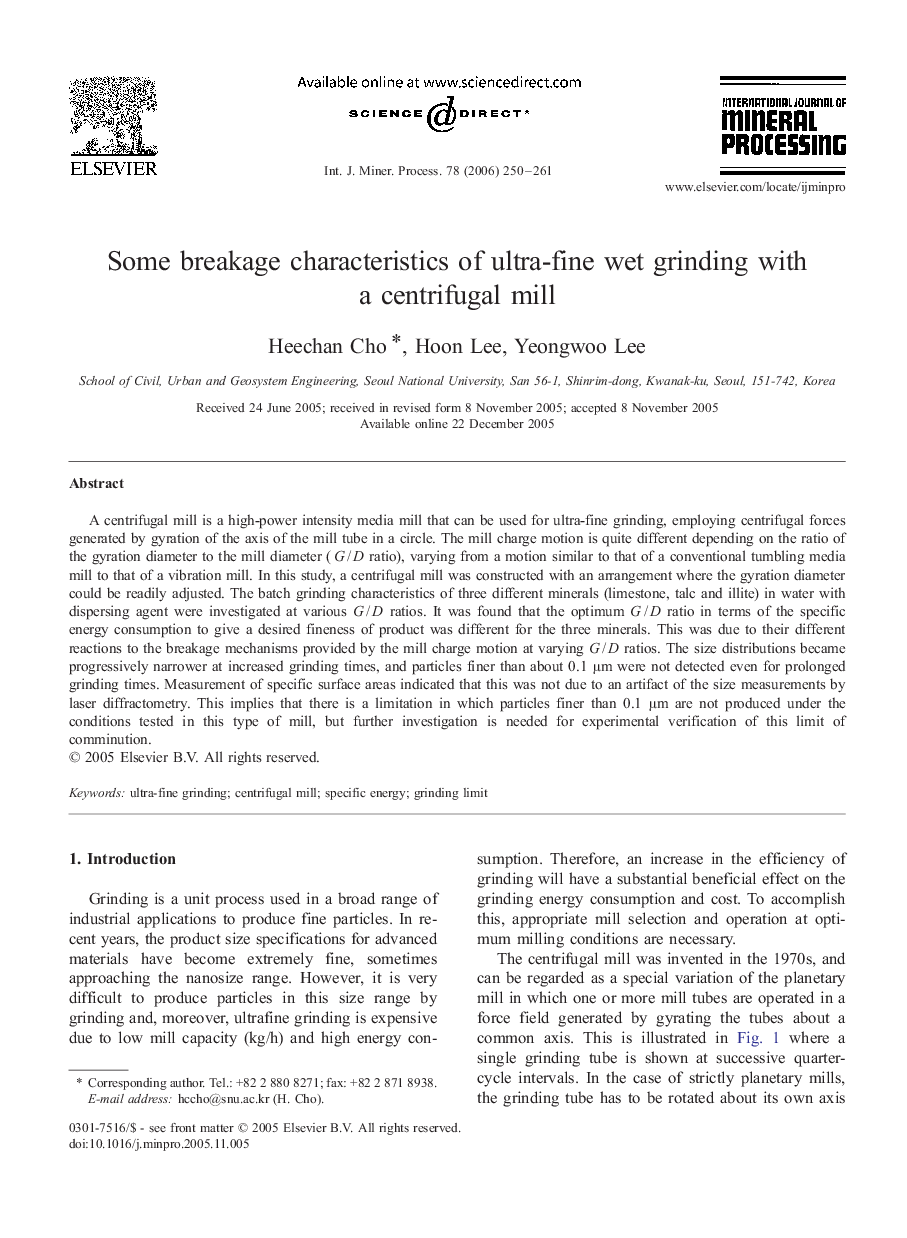| Article ID | Journal | Published Year | Pages | File Type |
|---|---|---|---|---|
| 214614 | International Journal of Mineral Processing | 2006 | 12 Pages |
A centrifugal mill is a high-power intensity media mill that can be used for ultra-fine grinding, employing centrifugal forces generated by gyration of the axis of the mill tube in a circle. The mill charge motion is quite different depending on the ratio of the gyration diameter to the mill diameter (G / D ratio), varying from a motion similar to that of a conventional tumbling media mill to that of a vibration mill. In this study, a centrifugal mill was constructed with an arrangement where the gyration diameter could be readily adjusted. The batch grinding characteristics of three different minerals (limestone, talc and illite) in water with dispersing agent were investigated at various G / D ratios. It was found that the optimum G / D ratio in terms of the specific energy consumption to give a desired fineness of product was different for the three minerals. This was due to their different reactions to the breakage mechanisms provided by the mill charge motion at varying G / D ratios. The size distributions became progressively narrower at increased grinding times, and particles finer than about 0.1 μm were not detected even for prolonged grinding times. Measurement of specific surface areas indicated that this was not due to an artifact of the size measurements by laser diffractometry. This implies that there is a limitation in which particles finer than 0.1 μm are not produced under the conditions tested in this type of mill, but further investigation is needed for experimental verification of this limit of comminution.
